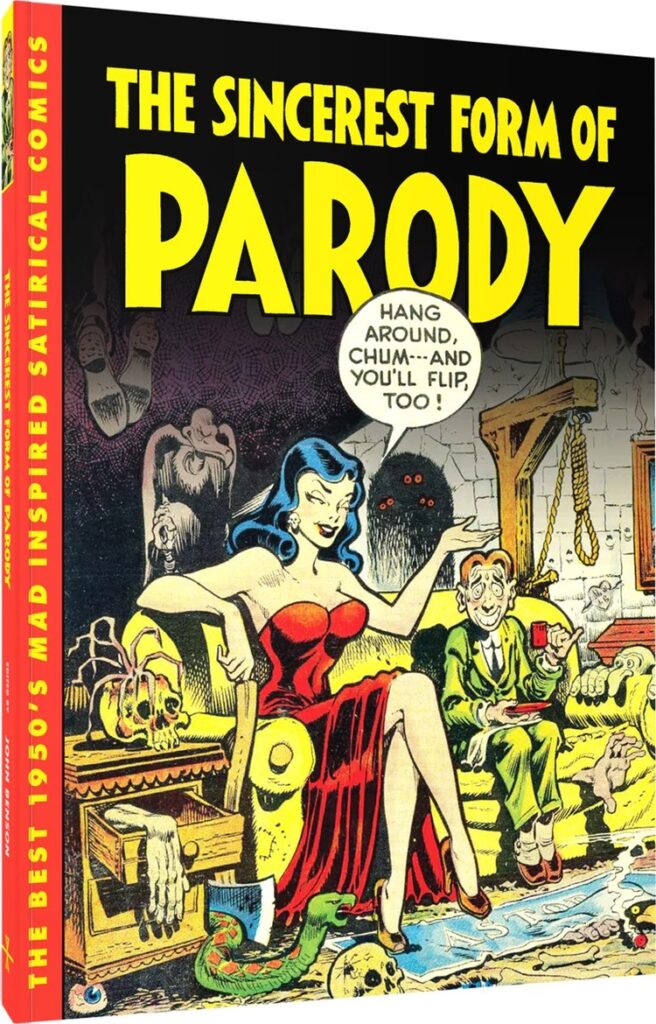
Debuting in 1952, Mad is one of the most influential American magazines of the 20th Century. Although it dealt in satirical humor, Mad captured the zeitgeist of the nation for decades as well as any news or pop-culture magazine. Anyone who owned a copy was presumed to be hip, a person who viewed the world with a proper amount irreverence, and had a sense of humor that ranged from the erudite to the scatological. Naturally, Mad‘s success spawned numerous imitators. Many of which were short lived.
Buy The Sincerest Form of Parody: The Best 1950s Mad Inspired Satirical ComicsJay Lynch, credited as one of the “founding fathers” of underground comic, writes in the Introduction, even though “the Mad clones never topped the Mad comics for pure, uncut satire…the worst of them were more enjoyable and unpredictable than those from the other genres of comic book of the 1950s.” Lucky for readers, The Sincerest Form of Parody “collects the best and funniest” stories. The material is divided by publisher and the Table of Contents lists the artists of the stories but the writers “where known are known are given in the Notes section,” which seems odd to divide them.
Starting with an excerpt from EC’s Panic #1, readers get “My Gun Is the Jury,” a spoof of Mickey Spillane’s Mike Hammer books, written by editor Al Feldstein drawn by Jack Davis, one of Mad‘s founding cartoonists. The commentary on the Hammer audience is funny because twice the lead character P.I. Mike Hammershlammer breaks the fourth wall and blames them directly for the violence and sex that occurs, which Mike claims make him sick. It is followed by “The Lady or the Tiger?” from the Classic Literature dept.
The work of Jack “King” Kirby can be seen in three segments from Charlton’s Eh! #4, including a spoof of newspaper comic strip Rex Morgan M.D. Joe Simon, his co-creator of Captain America, joined him for a single-panel preview of “Comet Feldmeyer” for the next issue. Other well-known comic artists that appear include Dan DeCarlo of Archie Comics in the same book; Bill Everett, who drew horror parody “Whack’s Museum” in Atlas’s Riot #3; and the team of Ross Andru and Mike Esposito from their self-published Get Lost #1 with a riff on a famed horror host with “The Sewer Keeper,” as well as their superhero-skewering “Captain Marble Flies Again” for Premier.
While an awareness of what’s being parodied adds to the reader’s enjoyment of Sincerest Form, it isn’t required; however, one likely needs some knowledge of the genre spoofed. For example, one need not have read a Hammer novel or seen a Hammer movie to get what’s going on in “My Gun Is the Jury,” but a sense of the elements involved with hard-boiled detectives would be helpful. In Benson’s Notes, he presents historical information about the publishers and the participants, some of which is taken from interviews, including a few he conducted, that fans and those wanting to learn more will appreciate.